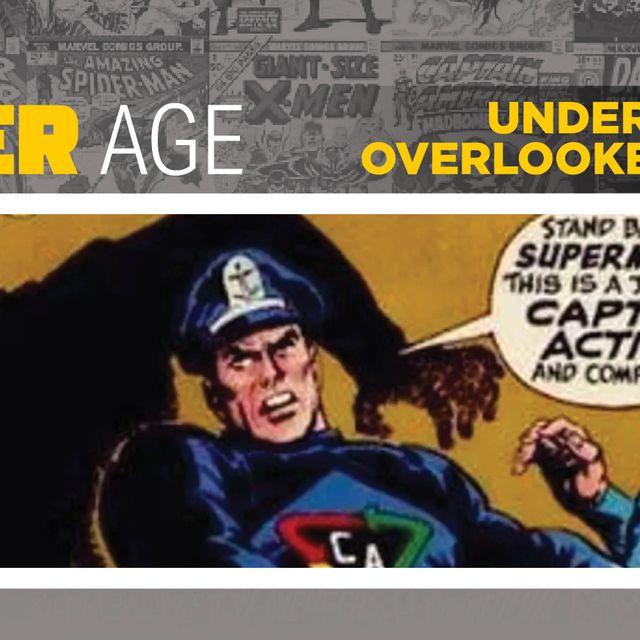
Restoration is frowned upon by many in the comic book collecting and speculating community. Make no doubt about it, there’s a stigma surrounding restored comics. Sure, secret restoration is under-handed and should be frowned upon since hidden restoration is tantamount to fraud. But what about restored books clearly labeled as such?
The list of possible cosmetic alterations that count as restoration can include: color touches to hide cracks and breaks in the cover, added pieces or materials used to restore missing chunks of the cover and other tears, reinforcement or the sealing of splits in the spine and interior using glue and other materials and, finally, various forms of repair.
The question I want to ask and answer here will be the following: should we buy restored comics?
My answer, in case you don’t want to read through this entire entry, will be a qualified yes.
If you’ve ever bought CGC graded comics, for example, you know that a purple ‘restored’ label can come affixed to a comic. The other grading companies, CBCS and PGX, also provide notice when restoration has been attempted. CBCS even distinguishes between ‘Restoration’ and ‘Conservation’, but without changing the color of their label. PGX does change the color of the label for restored books, but uses the same color [a Green label] that CGC uses to signify ‘qualified’ comics.
What restoration will mean for the purpose of this article is that the book at issue has been altered to make it appear better than would otherwise be the case. In my opinion, there’s nothing wrong with restoring your comics or buying books that have been professionally restored.
Are restored comics ideal?
Should we encourage the practice of restoration?
I would argue that restoration is not ideal. However, the decision about whether or not a book should be restored is one that should be left up to the book’s owner.
There are only two possible objections to restoration that I can think of. The first is that restoration will lower the value of the comic in a resale situation. The second is that restoration is immoral or unethical.
In answer to the first objection: the lesser value of restored books is a very real factor and one that we can see play out in the comic selling world. Still, since restoration does go on, we must simply accept it as one of the many factors to take into account when we buy or sell comics.
In fact, minor restoration if certain other important conditions are met, can often result in negligible differences in overall price.
Taking the recent sale of a popular book on GoCollect.com as an example, we see that restored comics, on average, are certainly worth less on the market, but not as much less as a reprint or incomplete version of the same book.
For example, Fantastic Four #52 is listed as having 1,689 Sales and a total of 3, 204 copies on the CGC census. Of those 3, 204 copies, 187 are noted as ‘restored’. What exactly is the difference in price commanded by restored copies versus their restored counterparts?
Looking at the sale of restored copies sold, the difference can be substantial, especially on higher grades. On March 22, 2017 a qualified CBCS restored FF#48 sold for $717.00 on Heritage while a non-restored copy from November of 2016 (four months earlier) sold for $3,346.00. The restored copy sold for almost five times less. However a 2.0 restored copy was sold on Jan. 29 2016 for $96.00 while the next sale of an unrestored copy on March 10th was for $145.00, which is not so significant a difference.
Compare these prices to the 2006 reprint of Marvel's Greatest Comics: Fantastic Four #52 an unrestored 9.2 has sales for between $31.00 and $610.00, less than the restored 9.0 of the same book.
Any way you slice it however, restored books are not as valuable to the majority of collectors as unrestored copies of the original book. Many collectors view the purple label as a dreaded thing to avoid. That said, I think it would be going too far to condemn any and all restoration. Whatever else you may think about it, restoration is not evil or perverse. It is preferred by some since it makes their comics look nicer.
I will end with two final thoughts. First, if a restored copy of a mega-key can sell for significantly lower prices, then the practice of restoration offers the possibility for some collectors to own comics that would otherwise be priced out of their buying range.
This, I think, is a benefit of restoring comics and one not often remarked on.
Second, although I don’t recommend this, some buyers seek out restored comics with light restoration (perhaps slight color touch) and buy them to resell or keep but remove the restoration. In other words, they break the comic out of the slab, remove the restored section(s) and then resubmit for grading. The resulting comic almost always ends up being a lower grade but sometimes, paradoxically, worth more than the restored version and also considered to be more investment worthy.


